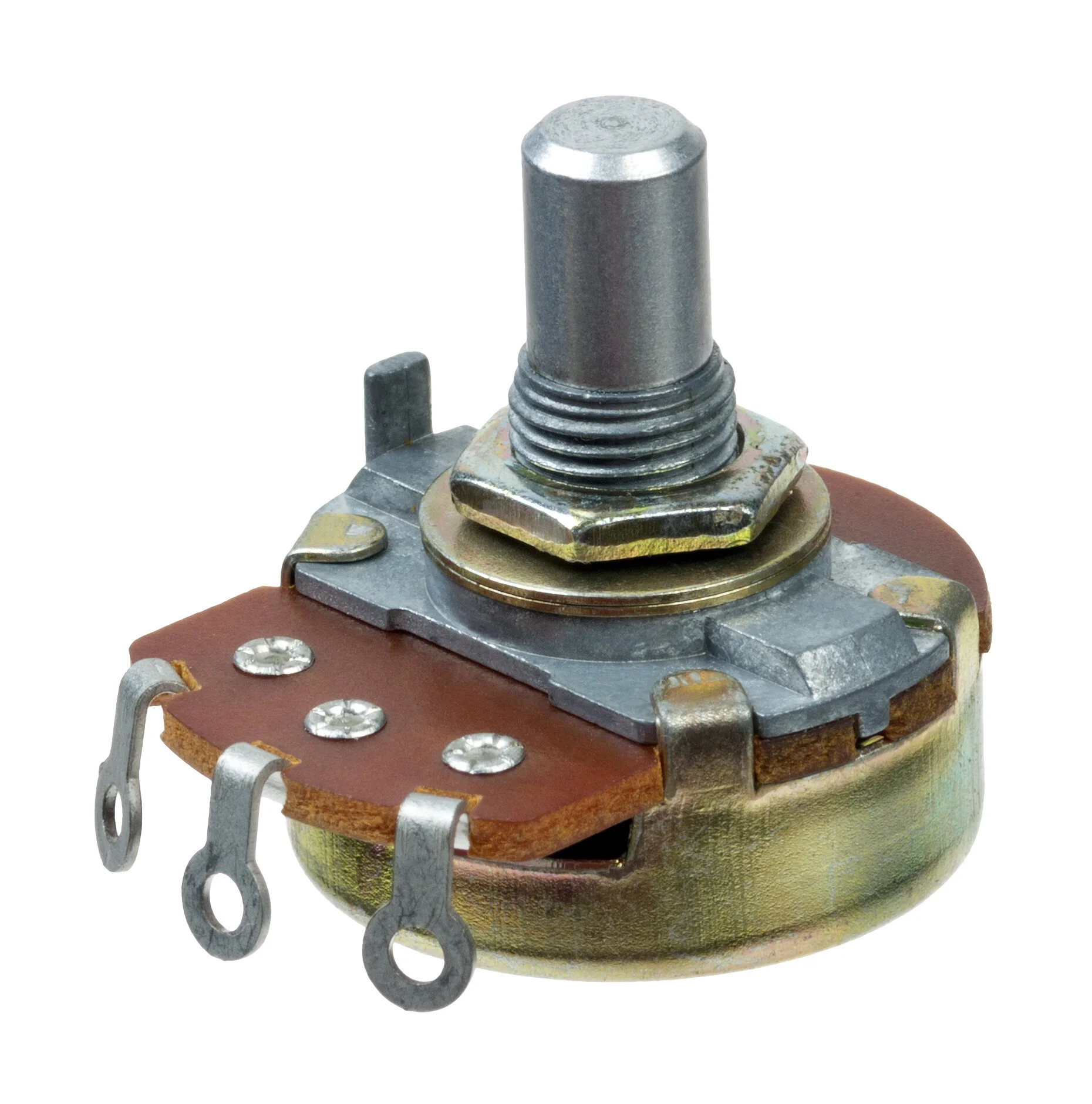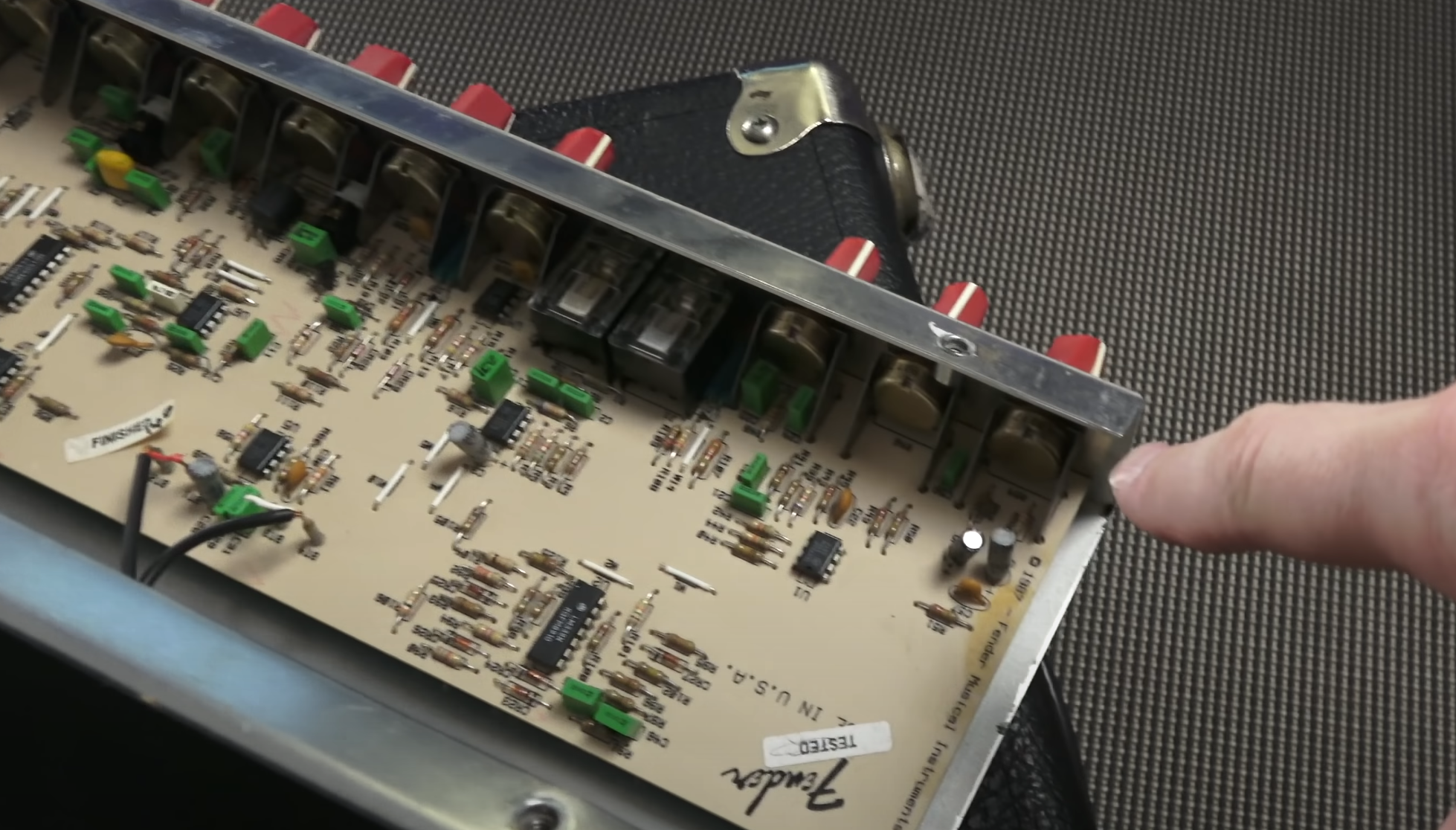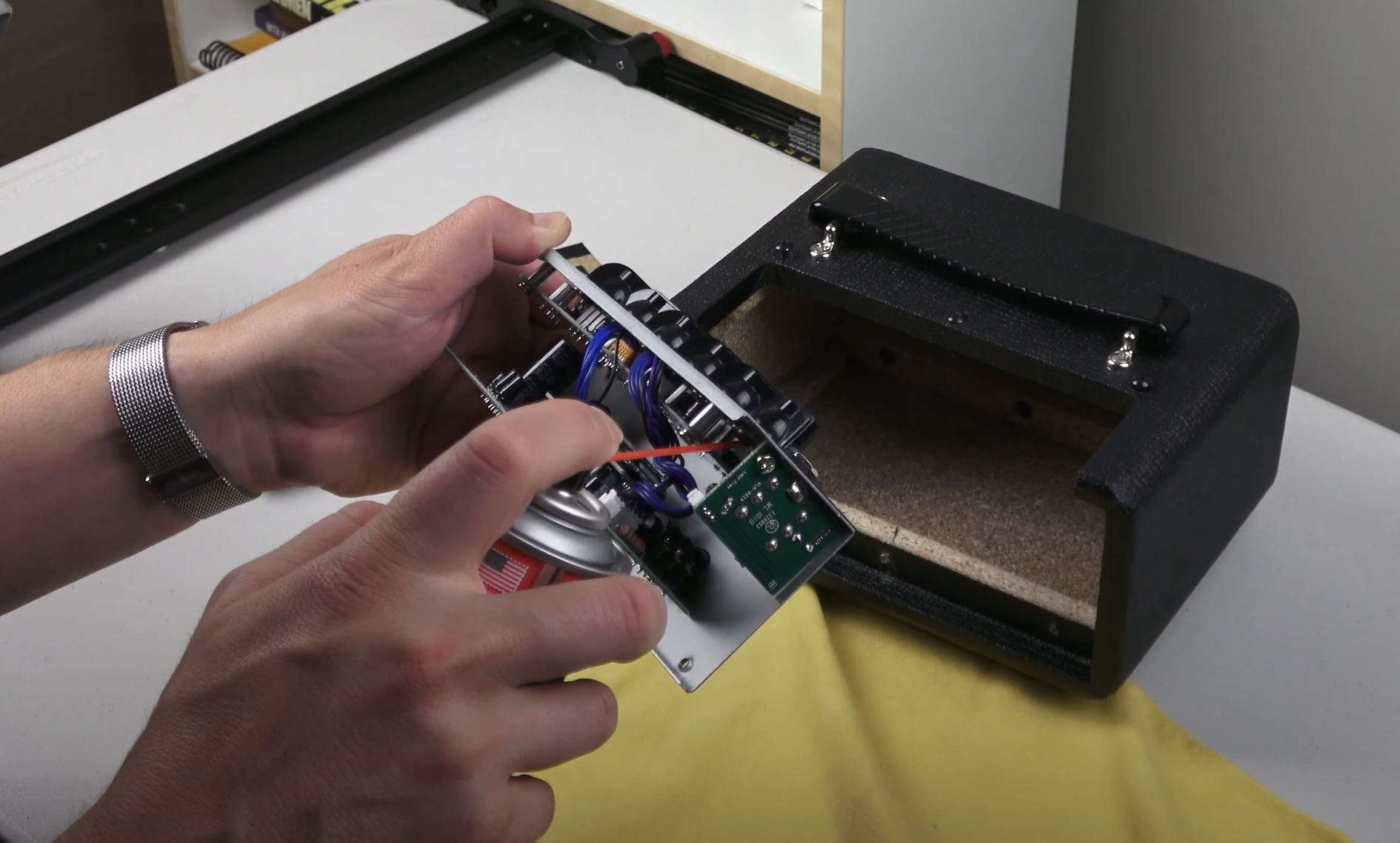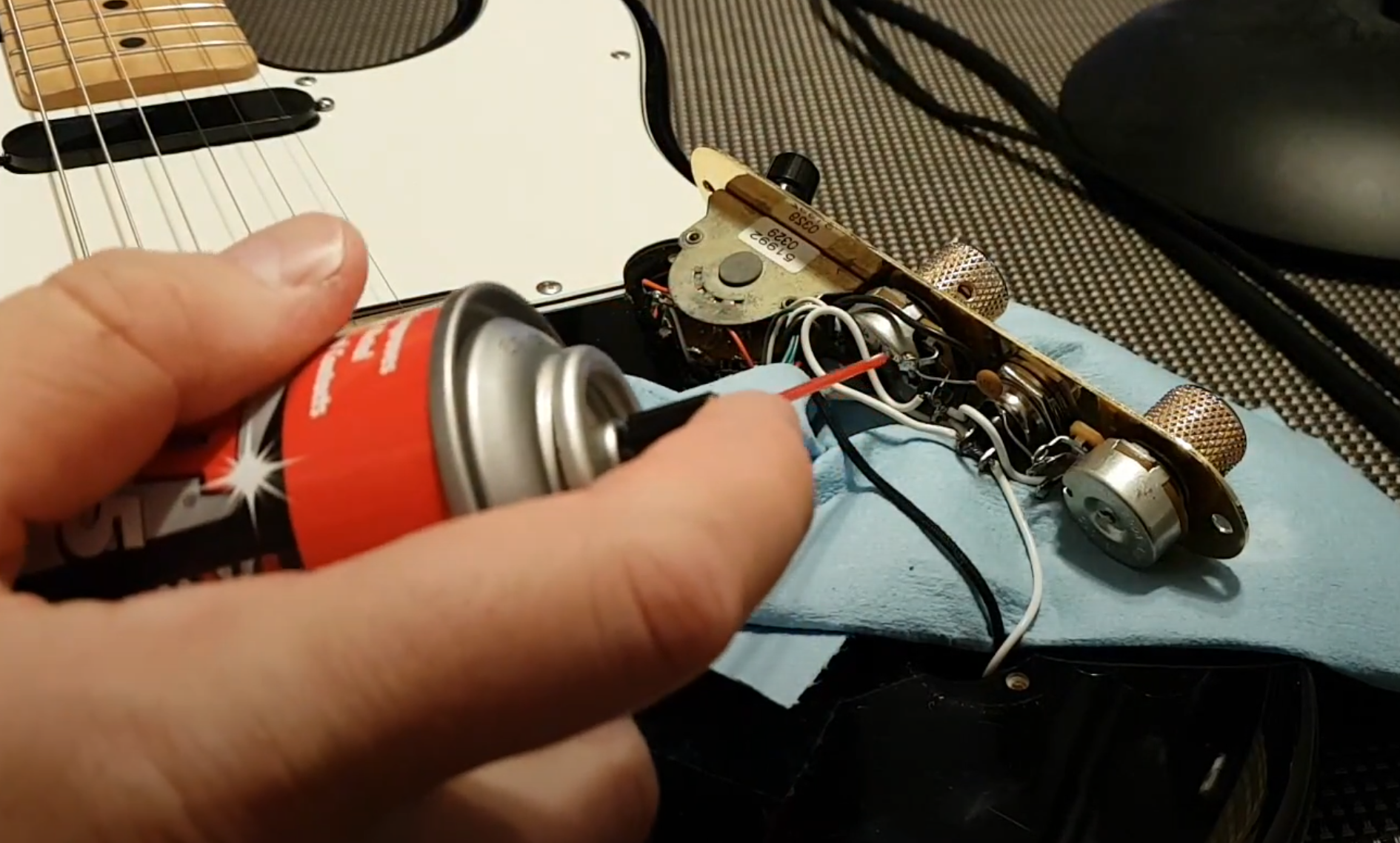How can I fix the scratchy sound in my guitar gear?
I really hate when this happens. You turn the volume knob on your guitar and all you hear is a scratchy sound coming back through your amplifier. This can also happen with your amplifier. You’ve got scratchy or crackly sounding pots. It’s not pleasant to the ear and you know something isn’t right. This is a super common issue that can happen on a variety of guitar gear and many general electronic devices. I’ve had it happen on old vintage gear and I’ve had it happen on brand new moderately priced gear. It doesn’t always happen, but sometimes it does. I know, that’s some deep thinking there!
WHAT IS THE ISSUE
This is a potentionmeter
So what is the actual issue? The thing is, no one knows. It’s one of those mysteries of life. OR, it’s some type of dirt or debris that has settled in the resistive element of the potentiometer. Potentiometer or Pot for short is what most people would refer to as the control knob. I know I’m a knob, but I’m no potentiometer. Well maybe I am, but enough about me. Fixing the issue is actually really simple and there are a couple things you can do about it.
THE EASIEST FIX
I mentioned there are a couple of things you can do when you experience scratchy pots. I’ve heard you can simply vigorously turn the control pot back and forth to try and clear debris. This hasn’t worked in my experience.
Ignore it
I know this isn’t really a fix. But the issue only happens when you are adjusting the potentiometer. And maybe that doesn’t bother you enough to worry about it. If it’s not a big deal to you and it’s not worth your time and money, you can just leave it like it is. I’m not aware of it having any long term negative effects.
Fix it
Now if you’re like me, the sound of a noisy scratchy crackling pot is super annoying. I’m not saying I’m super annoying, but maybe I am! The sound a pot makes, sounds broken to me and I can’t stand it. So I like to fix this issue with a spray canister of Deoxit D5 spray contact cleaner.
The OK way
So you’ve decided you can’t stand that garbage crackling sound and you bought some Deoxit D5 contact cleaner spray. Over the years I’ve repaired a couple types of guitar gear. I’ve had this scratchy sound show up on guitar amplifiers more than any other type of gear. I’ve had it happen on my old vintage Fender Deluxe 85, which was manufactured in the late 80’s, and I’ve had it happen on brand new Vox amplifiers, such as the Vox Mini SuperBeetle. You just don’t know when and where it will happen. So the easiest way to spray the pot is from the front. Before you begin, power off and unplug the electronic device you are working with. You don’t have to open up the amplifier or guitar, and it can work sometimes. However you will probably end up wasting more spray because you can’t target the pot properly from the front.
I recommend grabbing some paper towels and placing them around the spray area. There’s a good chance the spray will drip down when trying to spray the front of the pot. Once you’ve sprayed the area, they recommend you turn the control for a minute of two to help disperse the Deoxit D5 spray within the pot. I’ve had limited success using this method and this is why I don’t recommend doing it this way.
The BETTER way
Now the preferred method is to spray Deoxit D5 into the rear of your pots. This is a much more efficient method and it allows you to spray directly on to the contact surfaces inside the pots that are most likely having the problem. When you spray from the front, you really don’t know where the spray will end up, especially when you are doing it blindly. You’ll end up spraying more spray and wasting a lot in the process. Of course spraying directly into the pot will be more effective and it will take more time to gain access, but it will be worth it long term from my experience. I’ve done it a number of times. You want to spray into the pot directly.
And it doesn’t matter what kind of pot you are spraying into, the method is the same. You need to access the rear of the pot. So if it’s on an amplifier you will probably need to open up the amplifier. If you are not comfortable doing this, take it to a guitar repair shop. Working on an amplifier can be lethal if you don’t know what you are doing. I’ve opened a number of my amplifiers and each amplifier is different in terms of how you access the pots inside. It’s definitely more work to open up the amplifier VS spraying into the front of the pots, but I’ve tried both methods and it was worth the extra effort every time.
A much safer situation is to work on the pots inside an electric guitar. If you have something like a Fender Telecaster style guitar, all you need to do is remove the two screws on the control cavity. This will allow you to access the controls on the back of the control plate which will give you direct access to the pots. With full access to the rear of the pot, you can aim the spray straw directly into an open section of the pots. Give each pot a quick spray, then turn the pots for a minute or two to spread the spray within the contact area. This should work. If you still have issues, perhaps the pot needs to be replaced.
HOW DO I KNOW IT WORKED?
You’ll know almost immediately if the spray fixed your crackling and scratching sounds. After spraying the pots and giving them a good back and forth twist, simply turn on your amplifier or guitar, and turn the knobs. If you didn’t solve the issue, disconnect everything and give it another spray. And repeat this process until the noise goes away. From my experience it only take one spray from the rear. Like I mentioned, it’s less effective to spray into the front of the pot, and you may have to repeat the process multiple times. So just take the extra few minutes and get access to the back of the pot. It’s worth it.
quick summary:
Unplug and power off the device
Access the rear of the pot
Spray Deoxit D5 into the pot
Turn the pot shaft back and forth for a minute of two
Turn on the device and test for noise
Repeat if necessary
If you’d like to see the process in action, check out my YouTube videos which show the hole process. I show you in detail how I opened my amplifiers and guitars, and the before and after results. Good luck!







